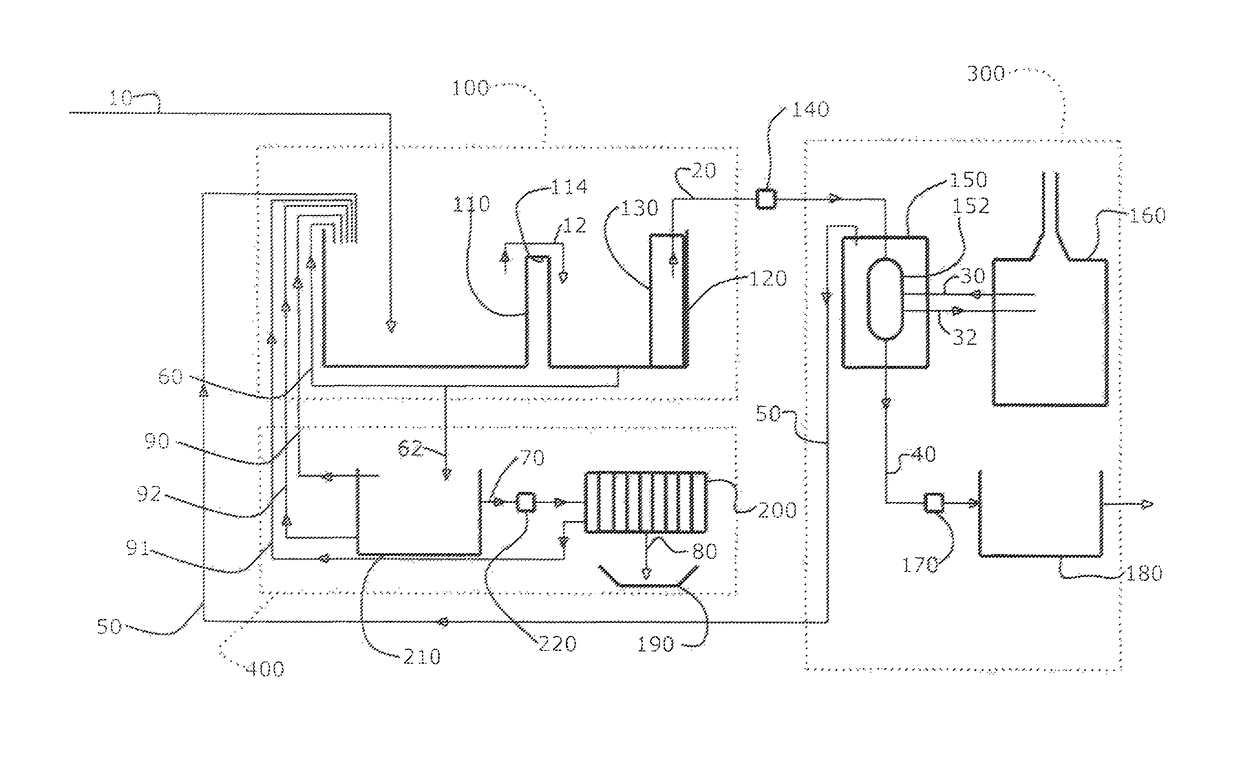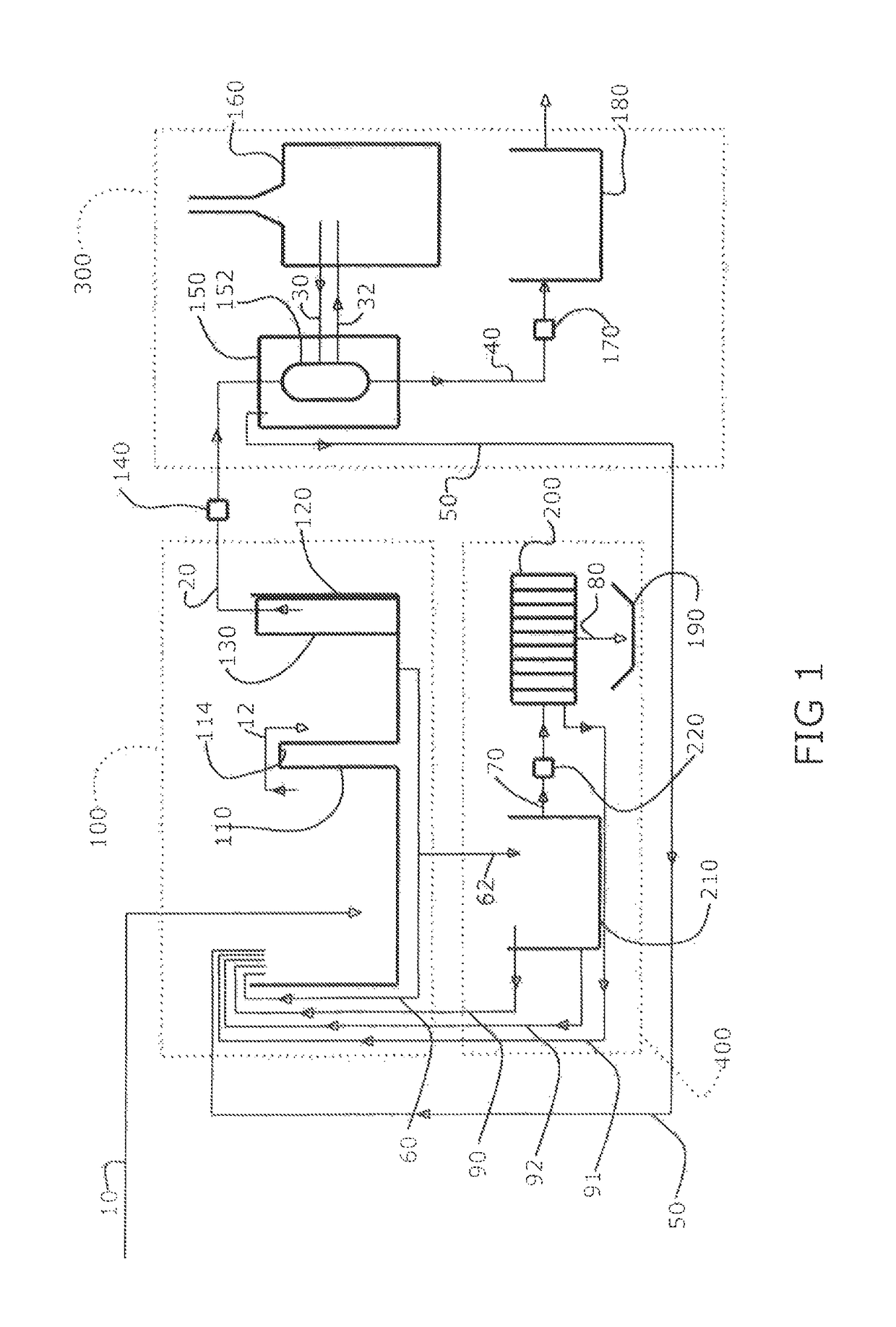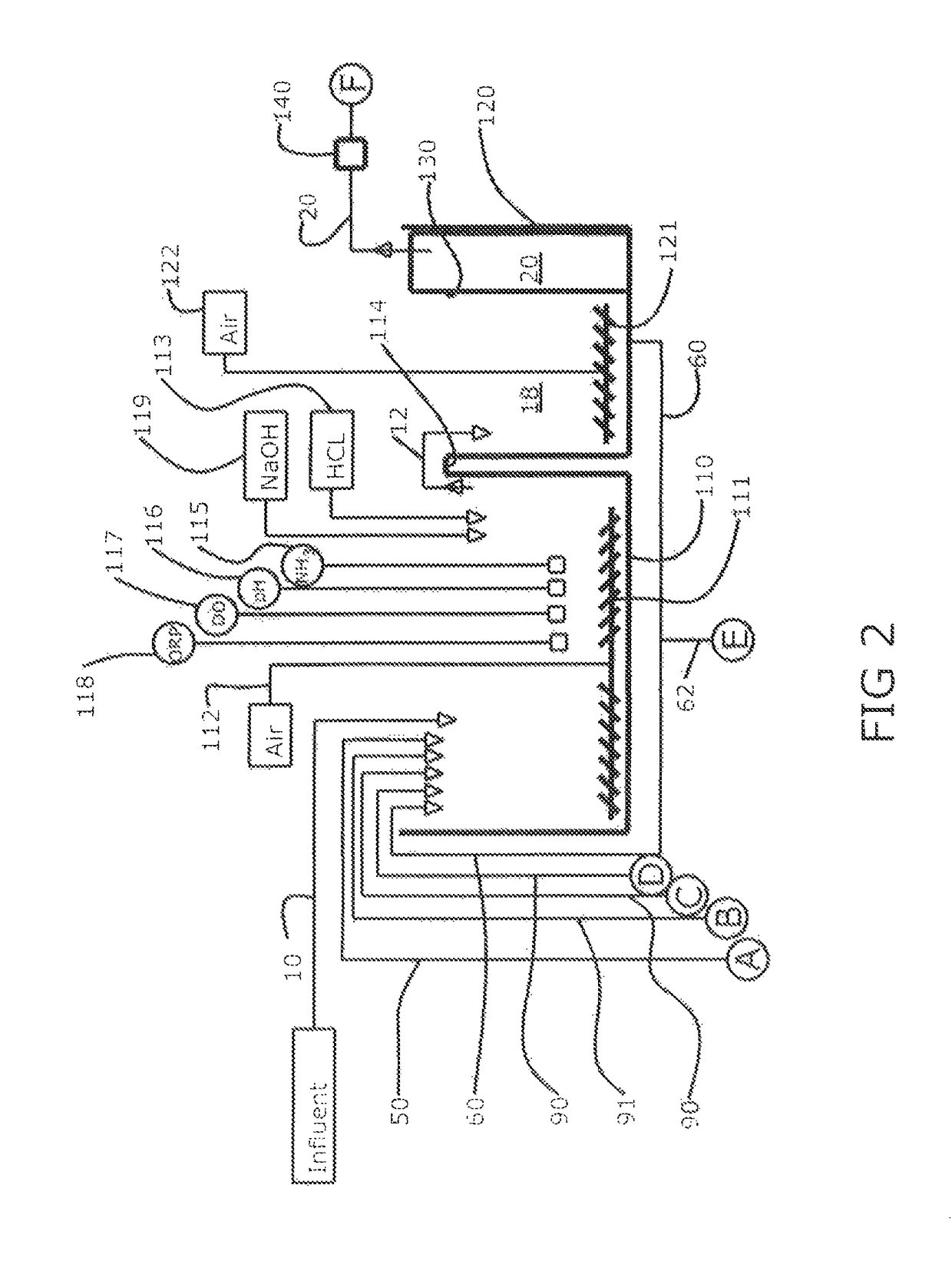Wastewater treatment system
a technology of nitrification and treatment system, applied in the direction of biological water/sewage treatment, sustainable biological treatment, water/sewage treatment by degassing, etc., can solve the problems of complex de-nitrification process, aqueous environment, and harmful effect of nitrate generated in the nitrification step, so as to reduce the complexity and operating cost, eliminate the complex and costly nitrification and de-nitrification steps, and reduce the size and cost
- Summary
- Abstract
- Description
- Claims
- Application Information
AI Technical Summary
Benefits of technology
Problems solved by technology
Method used
Image
Examples
example
[0049]A pilot test program was developed to determine the best manner to reduce the oxygen demand created by wastewater generated from an existing wastewater management facility (Facility 1). Initial evaluation of the varied wastewater streams showed that certain streams carried the highest potential for effective reduction of both ammonia and BOD. An exemplary pilot system in accordance with the invention was constructed and tests were run to assess the efficacy of ion exchange resin at removing ammonia from blended landfill leachate water, as well as pre-treated process water. Following ammonia removal by ion exchange, BOD removal was tested using a 3:1 ratio of activated sludge from the Middletown Municipal Wastewater Treatment Plant (Middletown WWTP) to sample. BOD removal was tested on a blended landfill leachate stream, and a pretreated wastewater stream over varying time intervals, following contact with the ion exchange bed, as well as a sample of wastewater from a second fa...
PUM
| Property | Measurement | Unit |
|---|---|---|
| concentration | aaaaa | aaaaa |
| diameter | aaaaa | aaaaa |
| diameter | aaaaa | aaaaa |
Abstract
Description
Claims
Application Information
 Login to View More
Login to View More - R&D
- Intellectual Property
- Life Sciences
- Materials
- Tech Scout
- Unparalleled Data Quality
- Higher Quality Content
- 60% Fewer Hallucinations
Browse by: Latest US Patents, China's latest patents, Technical Efficacy Thesaurus, Application Domain, Technology Topic, Popular Technical Reports.
© 2025 PatSnap. All rights reserved.Legal|Privacy policy|Modern Slavery Act Transparency Statement|Sitemap|About US| Contact US: help@patsnap.com



